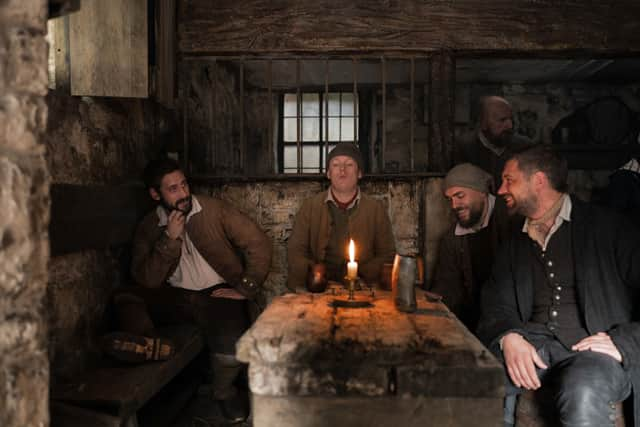Is The Gallows Pole a true story? Who were the Cragg Vale Coiners - real events that inspired BBC series
and live on Freeview channel 276
New BBC series The Gallows Pole follows a group of poor criminals operating in West Yorkshire on the eve of the industrial revolution.
The series stars Michael Socha, Samuel Edward-Cook, Nicole Barber-Lane, Jordan Preston, Ralph Ineson, and Thomas Turgoose. Filmed on location at the Calder Valley and Hebden Bridge, locations made famous by crime drama Happy Valley, the The Gallows Pole follows what could be the biggest fraud in British history.
Advertisement
Hide AdAdvertisement
Hide AdIs The Gallows Pole a true story?
It is based on the 2017 novel of the same name by British author and journalist Ben Myers. The novel has been adapted into the BBC three-part drama by This is England screenwriter and director Shane Meadows.
The novel and BBC series follows David Hartley, a worker who returns to his West Yorkshire home in the 1760s after many years away to find his community is destitute. Hartley organises a group of weavers and labourers to conduct a major fraud.
David shows them the art of clipping - illegally forging coins - a practice that was at that time punishable by death. As David hopes to bring his people out of poverty, the authorities set their sights on putting a stop to the clipping operation.
Set at the very beginning of the industrial revolution, Myers’ novel is a fictionalised account based on surviving sources and real people from the time.
Advertisement
Hide AdAdvertisement
Hide Ad

Who were the Cragg Vale Coiners?
In 1769, William Dighton (Deighton), a public official, investigated the possibilities of a counterfeiting gang in Cragg Vale. A Coiner by the name of James Broadbent betrayed the gang by turning King's evidence and revealed the gang's existence and operations to authorities. Dighton had Hartley arrested.
Coining was the practice of making counterfeit coins - one of the most common methods of doing this was clipping. Clipping involved clipping the edges off coins in order to make them into new coins, whilst also retaining the original.
Traders and bankers would usually accept a coin that had been clipped as long as the value printed on the coin was still visible, even though the inherent value of the coin had been reduced.
It is believed that Hartley and his gang successfully counterfeited around £3.5 million in gold coins, worth a staggering £650 million today
Advertisement
Hide AdAdvertisement
Hide AdClipping was not only an act of fraud, as of 1741 it was also high treason punishable by death after the third offence. This was not just a scare tactic - several people were actually executed for counterfeiting coins in the 18th century. Most were hanged at Tyburn, but Catherine Murphy was burned at the stake in 1789 - she was the last woman in England to suffer this punishment.
David Hartley and Isaac Hartley, both of whom are featured in the series, were real Coiners. The gang was betrayed by one of their own who had been arrested. David was later arrested and hanged at Tyburn in 1770, but his brother Issac was able to evade the authorities and lived until 1815.
The official who arrested David, William Dighton, was attacked and killed by the coiners in a vicious reprisal, 30 coiners were arrested for the crime.
When is The Gallows Pole on TV?
The three-part series begins airing on BBC Two on Wednesday 31 May at 9pm - later episodes will air at the same time weekly. Episodes will be available to watch on BBC iPlayer shortly after they are first broadcast.
Comment Guidelines
National World encourages reader discussion on our stories. User feedback, insights and back-and-forth exchanges add a rich layer of context to reporting. Please review our Community Guidelines before commenting.
